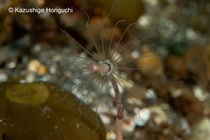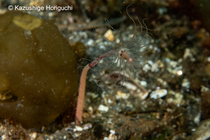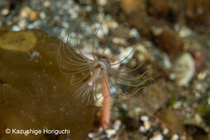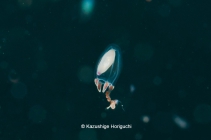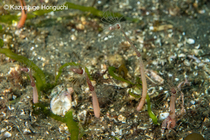WoRMS taxon details
Corymorpha tomoensis Ikeda, 1910
1615343 (urn:lsid:marinespecies.org:taxname:1615343)
accepted
Species
marine, brackish, fresh, terrestrial
recent only
Ikeda, J. (1910). On a new species of Corymorpha from Japan. <em>Annotnes zool. japon.</em> 7(3): 153-164.
page(s): 153 [details]
page(s): 153 [details]
Schuchert, P. (2024). World Hydrozoa Database. Corymorpha tomoensis Ikeda, 1910. Accessed through: World Register of Marine Species at: https://www.marinespecies.org/aphia.php?p=taxdetails&id=1615343 on 2024-05-03
Date
action
by
![]() The webpage text is licensed under a Creative Commons Attribution 4.0 License
The webpage text is licensed under a Creative Commons Attribution 4.0 License
original description
Ikeda, J. (1910). On a new species of Corymorpha from Japan. <em>Annotnes zool. japon.</em> 7(3): 153-164.
page(s): 153 [details]
page(s): 153 [details]
From editor or global species database
Additional information Corymorpha tomoensis has a hydroid stage whose “ground color is pink”, and on “the swollen part of the hypostome, on the hydranth-basis, and along the boundary between the non-papillated upper and the papillated lower regions of the hydrocaulus, a deep pink colour with a yellowish tint is prominent. A fine streak of the same colour is found on the inner side of each proximal tentacle. Numerous small round or elliptical spots of a light red colour are scattered over the non-papillated region of the hydrocaulus, more thickly in the lower half of this region”. Okada (1927) also added “The hydrocaulus can be divided into two parts: the red column of the upper part and the yellow column of the lower part. The red color comes from numerous lines and pigmented spots in longitudinal rows, which are missing from the lower part. The two parts of the hydrocaulus are of different color and they are also separated from each other by the presence of the perisarc whose development is limited to the yellow column” (translated from French).
The coloration pattern of C. tomoensis is not unique among its congeners. It greatly recalls C. rubicincta Watson, 2008; to a lesser extent C. tropica Galea, 2023; a peculiar congener photographed in a Mediterranean saltwater lake from southern France (https://www.inaturalist.org/observations/101257856).
Corymorpha tomoensis is likely a seasonal hydroid, occurring in temperate waters. Ikeda’s specimens were collected in September 1907 at Tomo, Hiroshima Prefecture. According to https://www.seatemperature.org/asia/japan/, water temperature at that time of the year is around 25°C. A new attempt to collect additional specimens in April 1908, at the same location, proved unsuccessful (water temperature at that time is around 15°C). However, Ikeda stated that more specimens were obtained (by Mr. Owatari) near Kajiko Island in July 1908 – water temperature in that area is around 25°C in July. Jäderholm (1919) obtained an additional polyp from the Goto Islands, in May 1914 (water temperature there is about 19°C).
A simultaneous record of both polyps and medusae was documented in situ in April 2016, from Osezaki, Shizuoka Prefecture:
https://guidediver.com/oosesaki/6011.html?fbclid=IwAR17MJwyCasEj15S5keaW_Yh5xhUgfqmOVVF3tT3p9p_m5wcPOFc3V_yao8
The medusa is C. bigelowi-like (with adaxially-placed nematocyst clusters on the main tentacle), and its umbrella is devoid of an apical projection.
A video footage of a Corymorpha from Ibarama, Ishigaki Island, probably shows the present species:
https://www.youtube.com/watch?v=u8YTZaDChVE&ab_channel=YTD%E3%82%AF%E3%83%A9%E3%83%96 [details]


